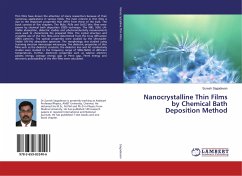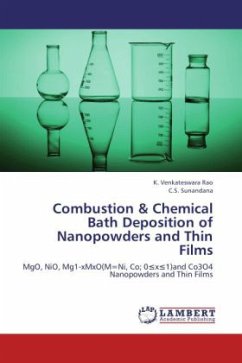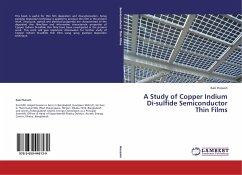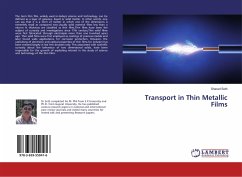
Thin films technology by chemical bath deposition
A Case Studies of Barium Copper Selenide (BaCuSe) Thin Film
Versandkostenfrei!
Versandfertig in 6-10 Tagen
40,99 €
inkl. MwSt.

PAYBACK Punkte
20 °P sammeln!
This study successfully demonstrated the deposition and characterization of Barium Copper Selenide (BaCuSe) thin films using the Chemical Bath Deposition (CBD) technique. The research highlighted the significant role of deposition parameters-such as pH, temperature, precursor concentration, and annealing conditions-in influencing the structural, optical, and electronic properties of the films. BaCuSe thin films exhibited promising characteristics, including high transmittance in the visible to near-infrared (Vis-NIR) range, strong UV absorption, and tunable optical conductivity, making them su...
This study successfully demonstrated the deposition and characterization of Barium Copper Selenide (BaCuSe) thin films using the Chemical Bath Deposition (CBD) technique. The research highlighted the significant role of deposition parameters-such as pH, temperature, precursor concentration, and annealing conditions-in influencing the structural, optical, and electronic properties of the films. BaCuSe thin films exhibited promising characteristics, including high transmittance in the visible to near-infrared (Vis-NIR) range, strong UV absorption, and tunable optical conductivity, making them suitable for optoelectronic applications. Their potential in photovoltaic cells, transparent conductors, photodetectors, and protective coatings underscores their versatility in next-generation device applications. Furthermore, compared to other chalcogenide materials, BaCuSe stands out for its environmentally friendly composition, higher bandgap for UV absorption, and superior transparency inthe Vis-NIR region. Despite these advantages, challenges remain in optimizing deposition techniques, improving film uniformity, and enhancing long-term stability.














